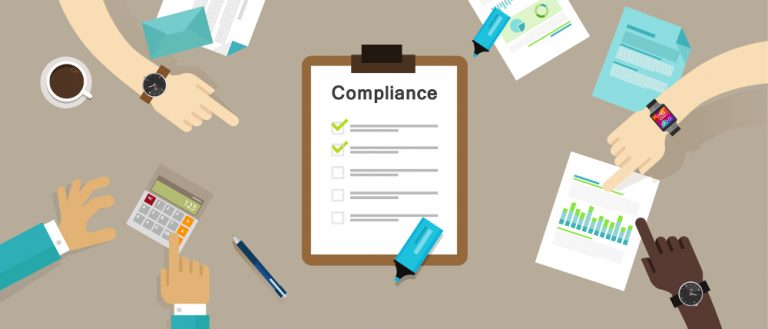Security standards come in different forms. While some aid in requirement compliance, the others allow you to ascertain your organization’s compliance to protocols. Both ISO 27001 and SOC 2 work together not only to secure your data ecosystem but also prove your information environment’s integrity. As such, understanding how ISO 27001 complements fruitful SOC 2 reporting is vital.
SOC 2 vs. ISO 27001: How to Select the Ideal Assessment for your Organization
What is ISO 27001 Compliance?
ISO 27001 is behind the introduction of the requirements that exist in the industry of information security management systems or otherwise known as ISMS. It was established by the International Standards Organization (ISO) in a bid to stress the preservation of confidentiality, availability and integrity of data in compliance with the necessary risk management protocols.
ISO 27001 boasts an Annex A that relies in several controls in creating flexible campaigns, particularly for data security. The management of such extended control sections can transfer, accept or avoid vulnerabilities as opposed to managing them within the control limits.
What is ISMS?
An organization’s information security management system or ISMS ought to maintain its focus on the interrelation of data, technology and employees. For example, the corporate culture of protecting data should be based on employee security awareness and password protection awareness. On the other hand, ISO/IEC 27001 emphasizes the importance of creating an ISMS. Nonetheless, it only provides recommendations for procedures as opposed to giving specific guidelines.
An Understanding of a SOC 2 Report
SOC report or service organization control report features three flavors. It allows an organization to assess its information security. What’s more, a SOC 2 report helps in reviewing the third parties’ potential service provision in its vendor management endeavors.
While SOC1 reports have for a long time been used to ascertain financial reporting controls SOC 2 reports aid in emphasizing on Trust Services Criteria or TSC for all controls within the IT space. Doing so assists in guaranteeing both downstream and upstream customers of the protection of their data.
SOC 2 reports come in Type 1 and Type II reports whereby the former not only emphasizes an organization’s management description of controls but also their efficiency at a given duration. Then, an auditor drafts a report that is based on the description and his or her expert opinion. Alternatively, the latter leverages the requirements of the American Institute of Certified Public Accountants (AICPA). In this case, it goes beyond a single review and your company has to put in place documentation to verify the efficiency of controls throughout the audit.
A considerable difference exists between Type 1 and Type II SOC 2 reports in that while one shows the efficiency of a one-day audit job, the other verifies data protection for a long duration. Although longer assurance helps in garnering customers when it comes to safeguarding their information, the audit process maybe costlier and time consuming.
ISO 27001’s Compliance for an Effective SOC 2 Report
As part of SOC reporting, you have to show your compliance with the documentation requirements of AICPA. The American Institute of Certified Public Accountants (AICPA) stressed the importance of Statement on Standards for Attestation Engagements (SSAE) 16 prerequisites up to May 2017. The present SSAE 18 attestation requirement boasts several adjustments specifically for documentation required to verify controls.
With the new attestation, you have to assess both your own data controls and your vendors. This case explains why your ISMS ought to safeguard your data while also engaging your whole organization. As such, it is safe to conclude that ISO 27001 ISMS serves as the security management’s basis. Furthermore, in case your organization’s data environment is upgraded, it automatically means that you are involved in multiple activities, particularly those required by SSAE 18 attestations boasting SOC 2 audit.
An Understanding of Vendor Management under ISO 27001
As set by ISO 27001, creating appropriate service level agreements (SLAs) is a part of vendor management. This role helps in keeping your data as well as protecting your customers from malicious attacks. Next, SLAs have to bind vendors in a bid to maintain the safety of data environments. Since you cannot depend on their reports, you must audit them frequently.
How do SOC 2 and ISO 27001 Integrate?
ISO 27001 insists on both the control of your data and that belonging to your vendors. Clients assess your capabilities using the same SOC 2 report protocols you apply to check your vendors. Bear in mind that risk-based procedures are ISO 27001 products. What this means is that in case you emphasize the relevance of organization-specific assets, you hold the control over protocols that are ideal for safeguarding your data ecosystem.
Make sure that you are disciplined when it comes to monitoring and auditing. Failure to do so can make the continuous documentation associated with frequent auditing overwhelming.
![[Jcount.com]](https://www.jcount.com/wp-content/uploads/2014/08/jcount150X50.png)
![[Jcount.com]](https://www.jcount.com/wp-content/uploads/2014/08/jcountstartupslogo1.png)





